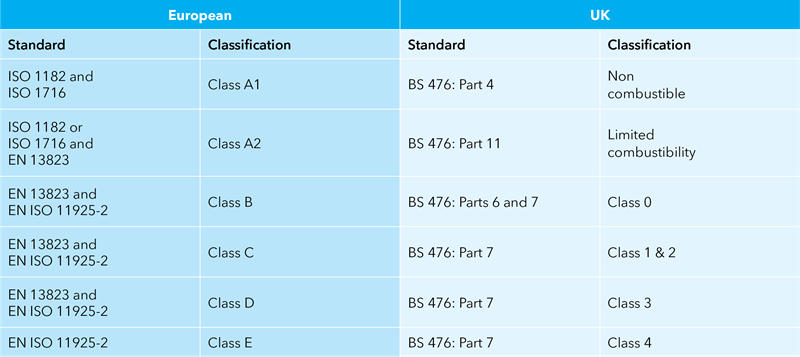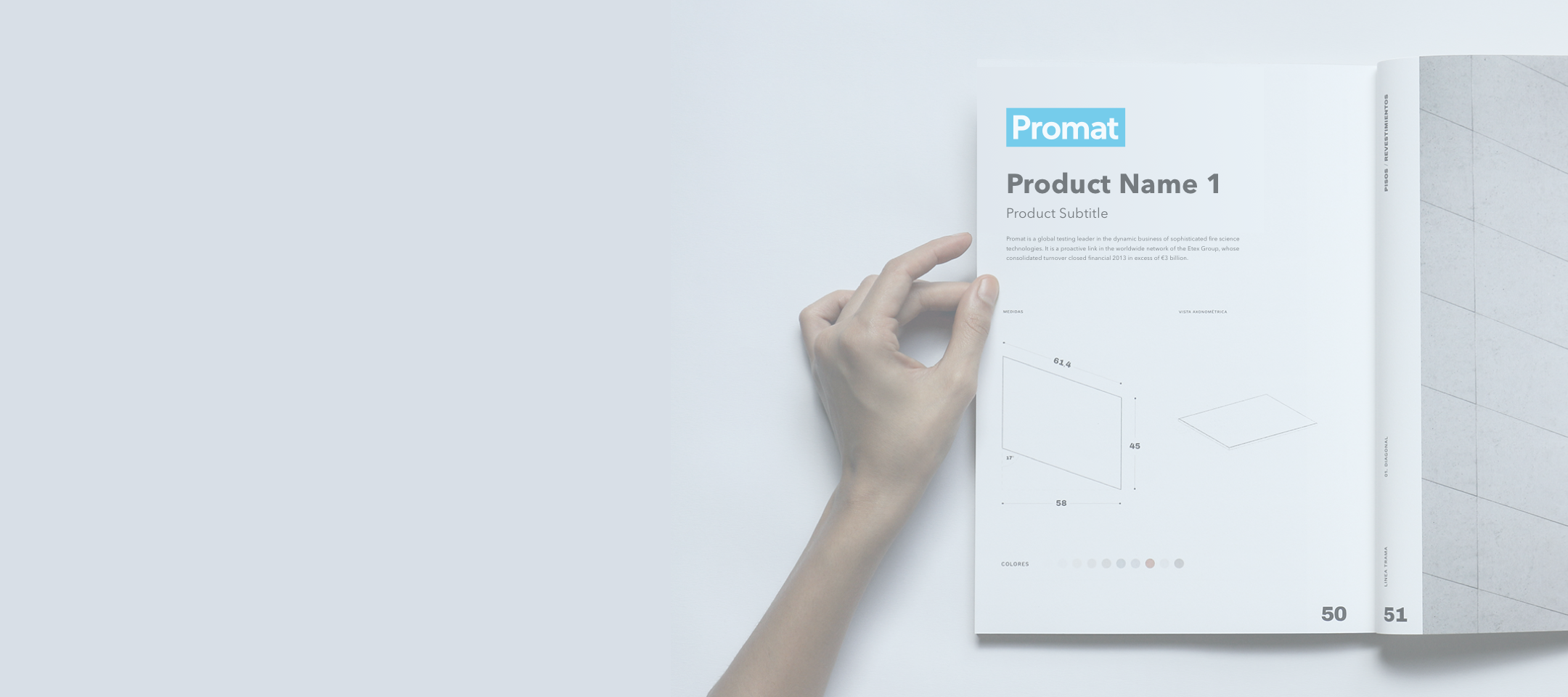
Science-based fire resistance codes and standards have evolved systematically over the years in Europe, the United States of America and Australia, and are today the most widely recognised and used in the world of modern fire protection.
The fire standards currently being harmonised throughout the twenty-seven nations of the European Community — regulations that have a direct impact on the lives of millions of people in Europe and beyond — are also increasingly used worldwide as effective benchmarks. They provide details of the anticipated extent to which materials or products burn and contribute to the development of fire.

European standards
BS EN 13823: 2010+A1:2014
Single Burning Item (SBI) test
The principal reaction to fire test method adopted within the European suite of tests incorporates a totally new method that exposes the products to direct flame impingement.
The single burning test item is designed to simulate the flame exposure that would be experienced by material lining the walls of a room when a “wastepaper basket” ignites adjacent to the walls in the corner of a room.
The test method primarily measures the heat energy contribution to the fire from the specimens and calculates a Fire Growth Rate (FIGRA). Secondary measurements conducted within the test apparatus calculate the volume of smoke produced by the fire, categorised according to Smoke Growth Rate (SMOGRA) indices.
The test apparatus also measures oxygen consumption as well as carbon dioxide and carbon monoxide production. These gas concentrations help identify the heat release and the burning characteristics of the tested specimens.
BS EN ISO 11925-2: 2010
Single Flame Ignitability (SFI) test
All products must pass this Single Flame Ignitability (SFI) test before undergoing the EN 13823 (SBI test). The SFI test involves a small, cigarette lighter size flame applied to either the edge or surface of the test specimen for a short duration. The time to ignition and flame spread across the specimen is recorded.
BS EN ISO 1182: 2010
Reaction to fire for building products — non-combustibility test
This standard specifies a method of testing to determine the non-combustibility performance, under specified conditions, of homogeneous products and substantial components of non-homogeneous products.
BS EN ISO 1716: 2018
Reaction to fire tests for products — determination of the gross heat of combustion (calorific value)
This standard specifies a method for the determination of the gross heat of combustion of products at constant volume in a bomb calorimeter.
BS EN 13501-1:2007+A1:2009
Fire classification of construction products and building elements (Part 1: Classification using data from reaction to fire tests)
This standard provides the reaction to fire classification procedure for all construction products, including products incorporated within a building element.
TABLE: Comparison of European and UK fire standards/classifications


British standards
BS 476: Part 4: 1970
Non-combustibility test for materials
This describes the classification of materials as either non-combustible or combustible. It is the most stringent standard for the fire performance of materials and gives a measure of heat and flames generated by the material under standard heating conditions. Non-combustible materials can be used without restriction in any part of building construction and finishing. Their use ensures that hazards due to smoke and toxic gases are minimised, and that the fabric of a building makes no contribution to a fire. All Promat board and cementitious spray products are classified as non-combustible.
BS 476: Part 6: 1989
Method of testing for the fire propagation of products
The standard specifies the method to determine the fire propagation index of materials. The test method takes into account the ignition characteristics, the amount and rate of heat release and thermal properties evolved by the product while subjected to standard heating conditions in relation to their ability to accelerate the rate of fire growth. Test results are given by an index of overall performance. I (fire propagation index) is based on the index of performance, S, and three individual sub-indices of the specimens. The higher the value of the sub-indices, the greater the ease of ignition and flame spread.
BS 476: Part 7: 1997
Method of testing to determine the classification of the surface spread of flame of products
The standard specifies the test to measure the lateral spread of flame along the surface of a product and gives the related classification system. Classes 1 to 4, in descending order, are based on the rate and extent of flame over the surface under standard heating conditions. As all Promat products are non-combustible they are also classified as Class 1, the highest rating for the surface spread of flame.
Class O (as defined in the relevant building regulations):
- Composed throughout of materials of limited combustibility; or
- A Class 1 surface spread of flame (in accordance with BS 476: Part 7) material which has a fire propagation index (I) of not more than 12 and a sub-index (i1) of not more than 6 (in accordance to BS 476: Part 6).
It should be noted that there is no test standard which can provide a report confirming that a product has a Class O status. The test reports for non-combustibility (BS 476: Part 4) or surface spread of flame (BS 476: Part 7) and fire propagation (BS 476: Part 6) must be used to ascertain the classification status of the product.

Australian / New Zealand standards
AS 1530: Part 1: 1994
Combustibility tests for materials
This describes the classification of materials as either non-combustible or combustible. It is the most stringent standard for the fire performance of materials and gives a measure of the heat and flames generated by the material under standard heating conditions. Non-combustible materials can be used without restriction in any part of building construction and finishing. Their use ensures that hazards due to smoke and toxic gases are minimised and that the fabric of a building makes no contribution to a fire. All Promat board and cementitious spray products are classified as non-combustible.
AS 1530: Part 3: 1999
Simultaneous determination of ignitability, flame propagation, heat release and smoke release
This standard is used to assess the early fire hazard of building materials and components according to their tendency to ignite and propagate flame, their heat release once ignition has occurred and the likelihood of smoke release. Four indices generated by the test procedures are ignitability, spread of flame, heat evolved and smoke evolved.
AS/NZS 3837: 1998
Method of testing for heat and smoke release rates for materials and products using an oxygen consumption calorimeter
The test method is used to determine the ignitability, heat release rates (HRR), mass loss rates, effective heat of combustion and smoke release of materials and products. The method of performance measurement uses a cone calorimeter for measurement of HRR, time to ignition and smoke production.

